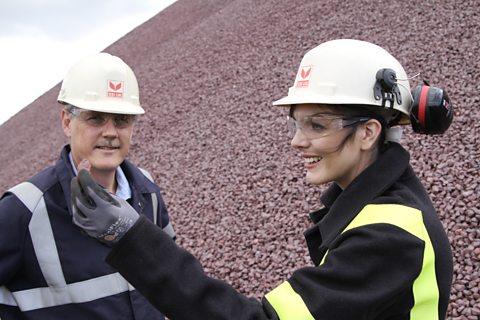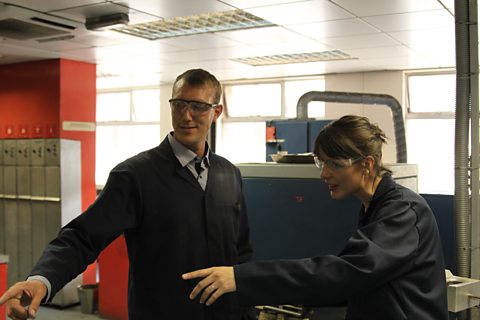Fran Scott visits a company that makes PVC to find out how you turn raw materials into plastic goods.
She explains how crude oil is processed using fractional distillation, and uses a model to explain the molecular structure of alkanes, alkenes and polymers.
At the plant, she finds out about all the additives that give different types of PVC their distinctive qualities.
She sees the powder compound mixed, melted and formed into pellets for shipping.
Teacher Notes
Following on from lessons on fractional distillation and cracking, use this clip to recap these two processes and to introduce polymerisation.
Students could be encouraged to evaluate the marshmallow model used to explain cracking and polymerisation.
Provide students with a list of questions to answer when watching the clip to draw out key points relating to your intended lesson outcomes.
Students could be asked to summarise the entire process from crude oil formation to plastics in a flow chart.
This could be very detailed, depending on the students.
Curriculum Notes
These clips will be relevant for teaching Science and Chemistry at KS4 in England, Wales and Northern Ireland and National 4/5 in Scotland.
The topics discussed will support OCR, Edexcel, AQA, WJEC GCSE in England and Wales, CCEA GCSE in Northern Ireland and SQA National 4/5 and Higher in Scotland.
More from Real World Chemistry
How is glass made? video
Fran Scott visits a glass production plant and learns how glass is made and the raw materials used are described.

How is paint made? video
Fran Scott goes on a tour of a paint factory and the ingredients for oil and emulsion paints are discussed and how they are made and tested.

How is iron extracted? video
Fran Scott visits a blast furnace and explains the science behind iron production from the raw materials through to the finished metal.

How is steel made? video
Fran Scott explains the science behind steel production from the raw materials through to the finished metal.
